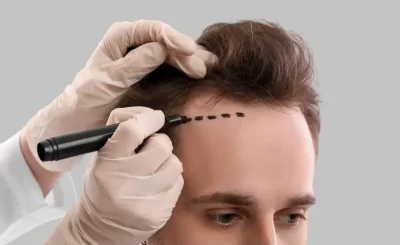Greater than 40 years ago, a vintage experiment states we’re able to practice a lot regarding the adults children will end up only using an easy, sugary treat.
The Stanford marshmallow experiment, first conducted in 1972, proven the youngsters capacity to stand up to these marshmallow searching for an additional reward predicted that child’s future academic and social success with surprising precision. Within the decades because the test, that easy marshmallow is ongoing to build up remarkably complicated poor everything you learn about children’s brain along with an adult’s health.
The close link between the fitness of the mind together with your is really a that scientists and doctors both more and more more recognize and completely observe. In a single simplified example, I’d hit the chocolate nick cookies way too hard not since i have am hungry, speculate I am anxious. If that’s the issue, addressing my anxieties is much more effective than simply padlocking the cookie jar. However, poor diet may amplify my anxieties, creating a mind-body feedback loop which makes it harder to endure the cookies.

The very first marshmallow test measured whether children could resist instant gratification. But new information suggests our health and wellbeing care strategies may improve once we ask why some children can resist and why others can’t.
An up-to-date marshmallow experiment, printed this year, recommended that children be proficient at battling temptation once they was a “reliable atmosphere” – that’s, once they had evidence to get belief inside their persistence would indeed yield a reason. Nurture, furthermore to nature, was implicated within the formation of self-control and determination.
Other research, though, proven the outcomes of undermining children’s depend upon their surroundings round the bigger and even more saddening scale. Within the mid-1990s, the Kaiser Permanente Institute conducted research calculating Adverse Childhood Encounters (ACEs) additionally for their interact with later-existence health outcomes. The research, conducted combined with the Cdc and Prevention, created the muse for ongoing analysis within the connection between childhood experience and adult medical health insurance well-being.
The research identified 10 prevalent ACE groups, sorted broadly into abuse, neglect and household disorder. The research found that because the figures of ACEs an individual reported elevated, also did the probability the person would develop health issues, that could vary from physical (liver disease) to mental (depression) to behaviorally caused (smoking or illegal drug abuse).

Now, more than in individuals days the research needed place, neurology is able to explain the lifelong impact of childhood trauma across the brain. Dr. Nadine Burke-Harris, a health care provider that has incorporated the ACE findings into clinical practice, can be a demonstration of a physician that has made some reframing social issues as neurochemical ones within their practice. Within the 2013 interview while using the California School Boards Association, Burke-Harris described why ACEs along with the connected stress are particularly dangerous: “Children are particularly vulnerable their brains remain developing.” (1) She ongoing to condition that repeated stress responses – frequently known as “flight or fight” – deregulate children’s capacity to deal with emotional and physical stressors later on and adversely personalize the youngsters health in lots of ways.
Such extended stress exposure appears self-apparent in situation of prolonged abuse. But neglect and deprivation are beginning to become neurologically hazardous too. Research conducted recently found that brain scans of youthful children already show glare, bad or good, in the socioeconomic status. In communities which are both poor and violent, some psychologists have reported that children uncovered to street violence risk developing publish-traumatic stress disorder, with signs and signs and signs and symptoms much like individuals found in combat veterans.














